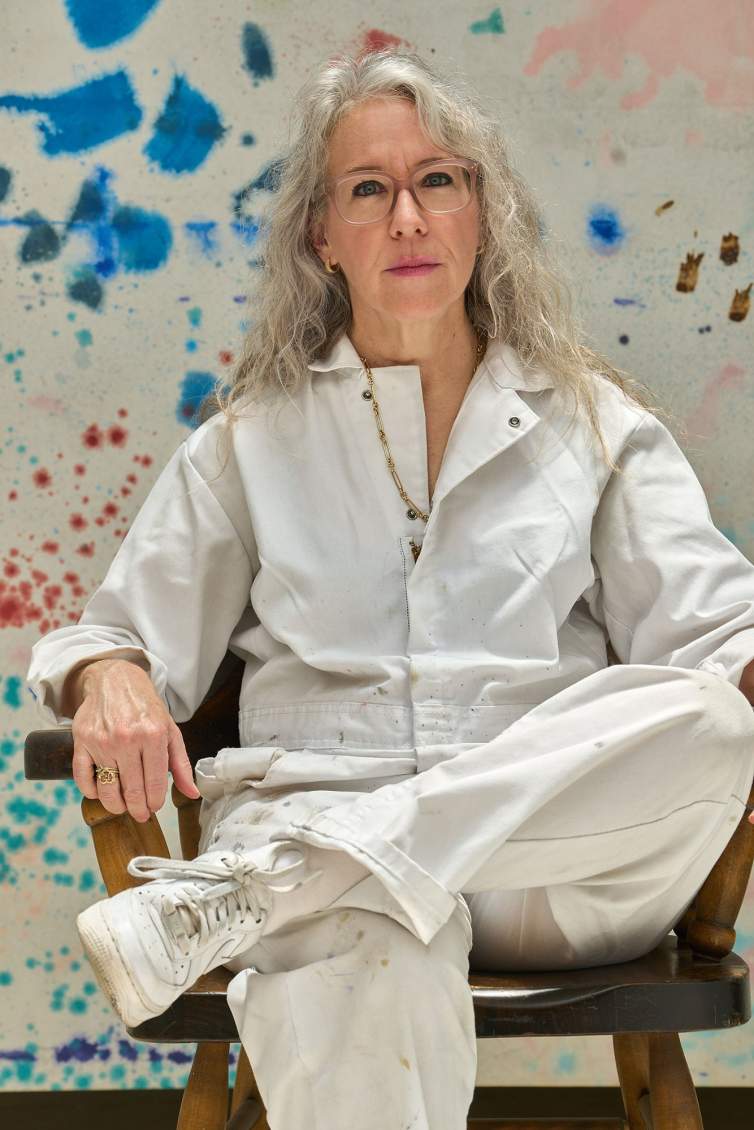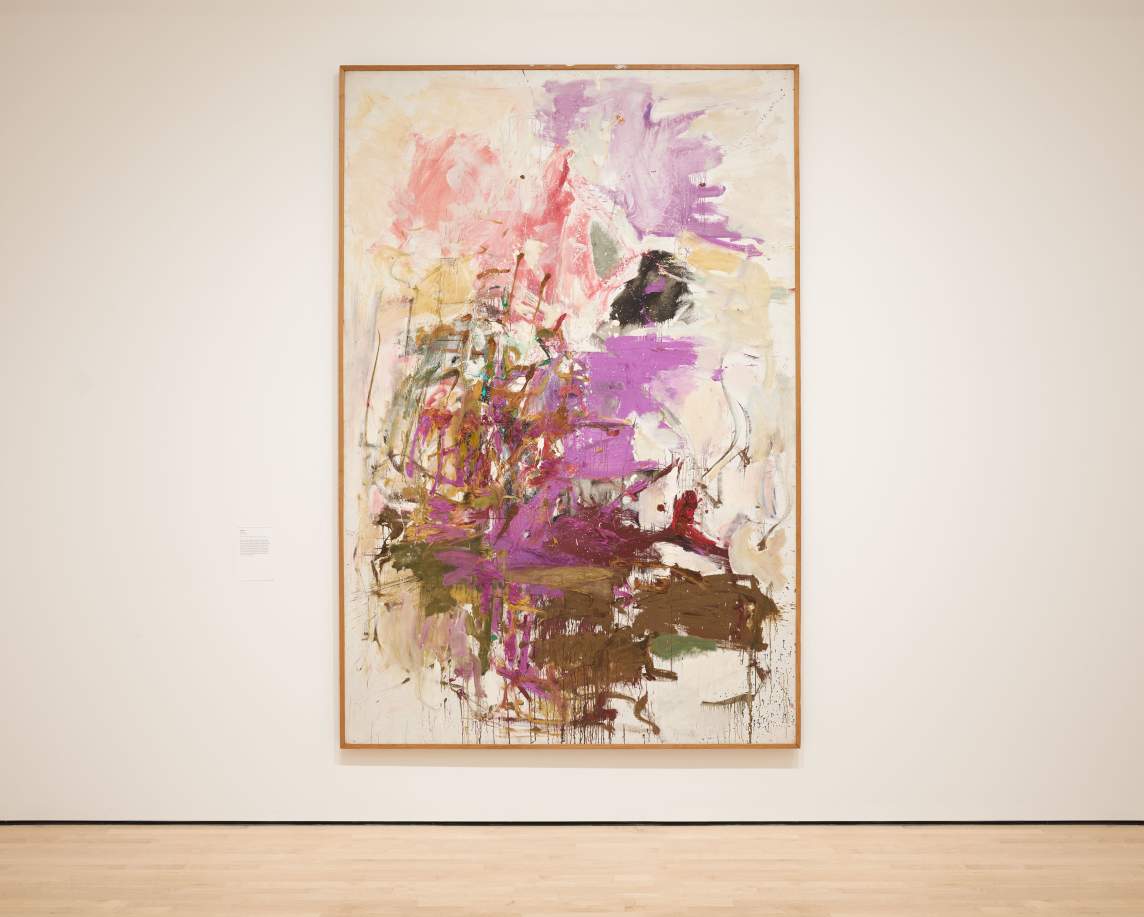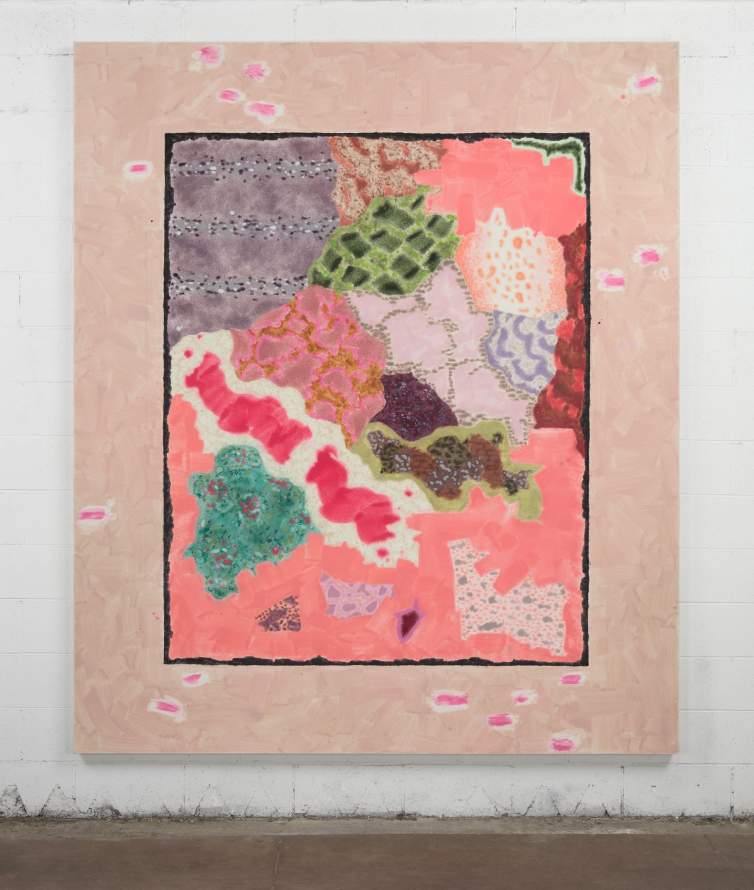In the Studio: Rina Banerjee
"The technique I have developed is more about having this conversation with wate...

Joan Mitchell’s palette and titles often have a deep connection to the natural world. But once in their presence, Mitchell’s paintings are not explicit. I like this aspect of her work very much. It wasn’t her goal to tell you how to think or feel.
This is also what I appreciate about abstraction; what abstraction does so well. It releases itself from the role of “telling”—a literary form of illustration. Remarkably, too, abstraction offers a form of protection and opacity in how it can move away from the direct act of explanation. It offers a break from the constraints of comparison and the literal. Abstraction can also allow permission for the subjectivity of the artist. Mitchell’s famous remark, “My idea of a tree, which has nothing to do with a real tree,” is a generative trajectory to work from.
I very much relate to Mitchell’s thoughts and statements on color: color as content and color as it functions in relationship to itself. Understanding that certain colors can be seen as “awful” or “dead,” and how this can be easily and miraculously shifted by where other color combinations are placed compositionally. I love how Mitchell insists on this in one of her interviews and firmly instructs her interviewer to not sweep this point about color “under the rug” by labeling it as irrelevant formalism. This is NOT formalism, she admonishes.

Mitchell worked with color in often daring ways, seeing its contrasts as invigorating. Color is consistently foregrounded in her work, capturing and challenging the vitality of beauty, the aliveness of an experience. Untitled (circa 1962) is a favorite example for me. I saw this painting in person at SFMOMA in her large-scale exhibition curated by Sarah Roberts and Katy Siegel. It’s an arresting painting made 64 years ago. The palette looks like it could be painted just as easily today. Its 10 foot verticality makes it even more pronounced as an abstraction, as well as its lack of a title. Its resistance in any overt statement or cue of what it might mean to her, what it might reference, is left to her audience.
This is where her color choices do the heavy lifting. In Untitled (circa 1962), the cobalt violet light and rose geranium pinks would seem at odds with the dark browns and greens. While we accept these colors together in the natural world without thinking much of it, seeing them within a single painting creates a dynamic contemporary buzz. The whole painting is sharp. The small wild bits of cadmium red and some kind of turquoise paint minimally slashed on backflips the pretty color. An acidity and something artificial is added by these flecks. Could they be adding something almost tacky? There’s a zone where the purple is wiped out and an area where the purple is piled on. Is this a single amount of purple applied, removed, and relocated? I enjoy clocking Mitchell’s decisions. The paint application decisions, the composition decisions, the color decisions. I have always been astonished to know how much time she spent painting at night and then how in the morning she’d need to go first thing “to check her colors” in the daylight.

Parts of Joan Mitchell’s and my biography intersect. We both share a dual education at Smith College and then at the School of the Art Institute of Chicago. I’ve noticed this same educational overlap with other women artists, too. This commonality reveals a particular and perhaps noteworthy open channel in women’s art education at the time. Mitchell’s observations that living in France offered her more freedom and possibility in her work, away from the grind of exhibitions in New York, resonates with how I feel about living on the west coast, in Los Angeles. Being “off” a kind of hierarchical map is beneficial to my work.
I view Michell as a role model for her feminist attitude, which I see in her firm boundaries, her work ethic, and her perseverance to keep “at it.” She lived a long, great life on her own terms. I think it is also important to mention this because it made her independence more possible: She had “fuck you money.” It was not simply her sheer grit alone, although she did seem to have a wealth of sheer grit, too! Even if she struggled internally, Mitchell faced a lot of barriers and solidified a kind of resistance that has guided other artists facing barriers that have come after her. That is a massive legacy to leave: vigilance for working at the highest level.
Rebecca Morris is a painter based in Los Angeles and a 2024 Joan Mitchell Fellow.